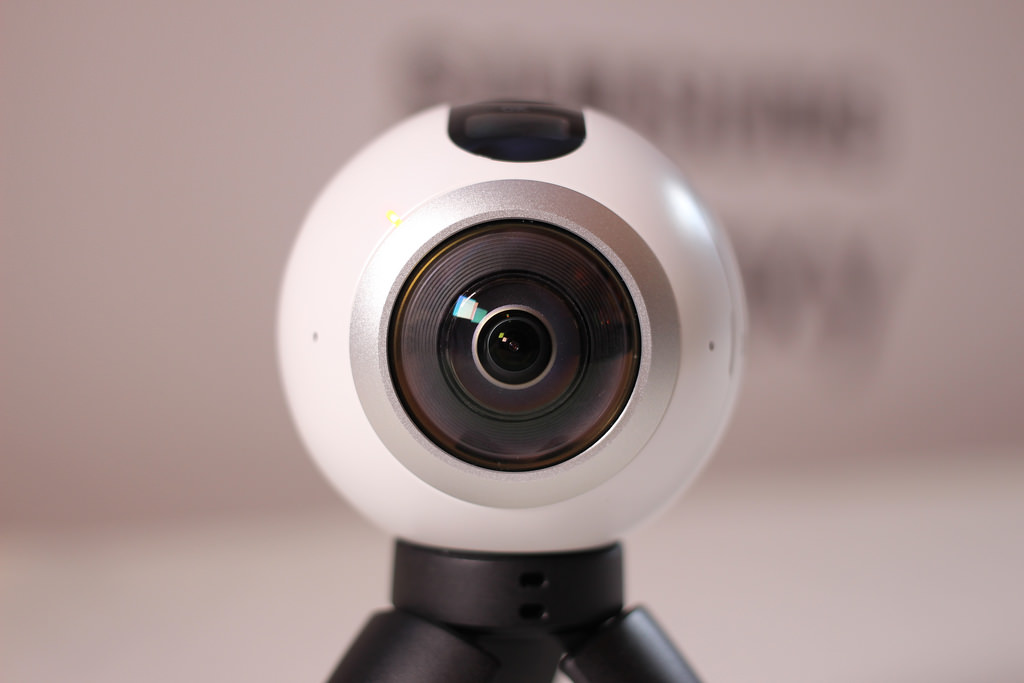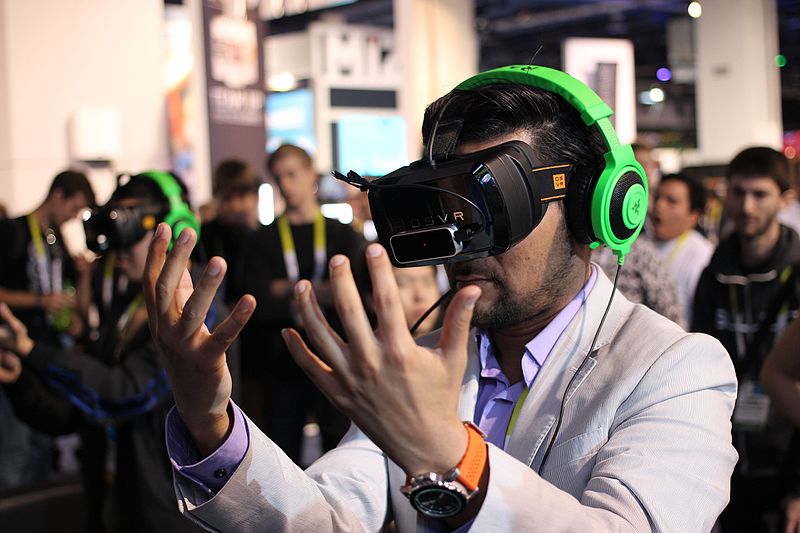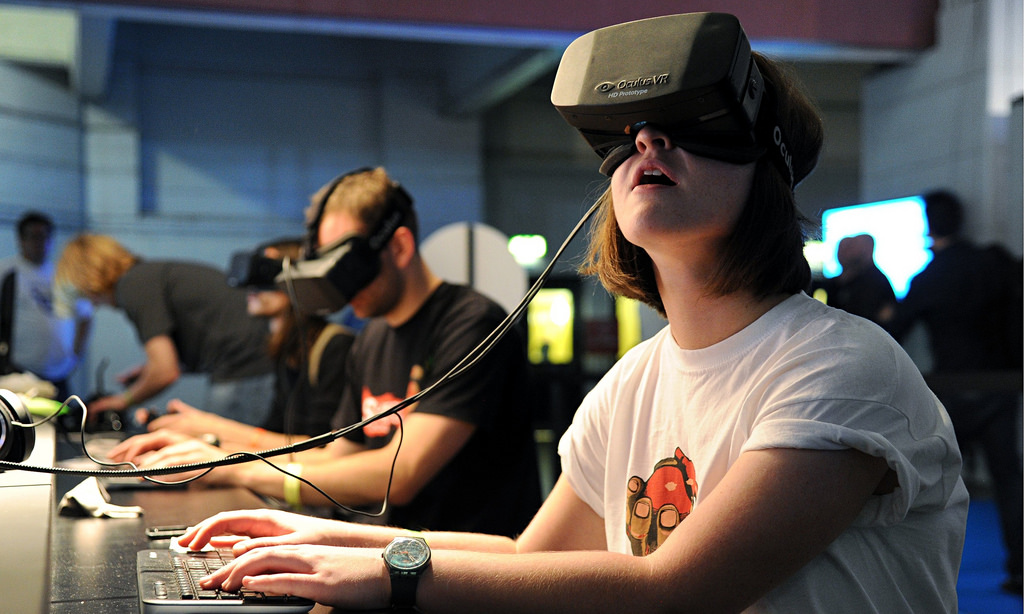Ever wondered what its like to be a journalist on the frontline of a global news event? Now you can experience it first hand. With virtual reality technology (aka VR), viewers have the opportunity to be placed into some of the biggest news stories out there.
Journalist and documentary film maker, Nonny de la Pena, saw synergy between VR and journalism and became the pioneer of a new kind storytelling known as Immersive Journalism. In a 2015 Ted Talk, de la Pena said that throughout her career, she wanted to tell stories “that could make a difference and maybe inspire people to care.”
Her first creative venture in the VR space was an interactive documentary film entitled Hunger in Los Angeles that premiered at the 2012 Sundance Film Festival. The film captures the scene within the chaotic line of a local food bank as a man collapses in a diabetic coma. The audio is real while the visual aspects were re imagined using 360 degree camera techniques, computer graphics and motion sensors. Participants at Sundance were not only watching a documentary film; they were also fully immersed in the experience of this particular food bank line.
According to de la Pena via her website, “By coupling the latest virtual reality goggles with compelling audio, which tricks the mind into feeling like one is actually there, HUNGER provides unprecedented access to the sights, sounds, feelings and emotions that accompany such a terrifying event.” The film was so powerful; many people were in tears when it ended. In fact, after the film’s success, de la Pena was proclaimed the “Godmother of Immersive Journalism” by Engadget.
360 Degree Views
One of the main pillars of immersive journalism is the use of 360 technology. This type of video is shot using an omnidirectional camera, which captures a 360 degree field, providing viewers with a panoramic view. According to Geri Migielicz and Jane Zacharia of Stanford School of Journalism, 360 degree video “has the potential to enhance storytelling by offering the audience experiences and environments that are logistically out of reach for most of us.”

360 capturing tech was ubiquitous this past year at major tech conferences across the globe. The annual Consumer Electronics Show in Las Vegas (aka CES), for example, featured a myriad of 360 capture devices in price ranges that anyone can afford. Uploading and sharing that content has also become trivial. 360 content taken with these devices can then be uploaded to social media platforms like Youtube and Facebook.
Inspired by the work of Nonny de la Pena, Journalism 360, founded in 2016, is a self-proclaimed “immersive news initiative” with the goal of promoting the use of 360 video technology in news. Pioneered by the Google News Lab and the Knight Foundation, Journalism 360 aims to bring attention to the immersive journalism movement through education, funding and experimentation. They act as a resource for both journalists and consumers who want to learn more about immersive storytelling.
You as a Digital Avatar
In an immersive journalism film, the viewer is not only watching it, they are also part of it. On her website, de la Pena states that: “The participant will be typically represented in the form of a digital avatar {or} in one of several forms.” She goes on to say that “Whether visiting the space as oneself or as a subject in the narrative, the participant is afforded unprecedented access to the sights and sounds, and possibly, the feelings and emotions that accompany the news.” Unlike other interactive news experiences, immersive journalism puts you directly into the action. This enhances viewers connection to the story and subsequent reaction.

Learning Through Empathy
According to Janet Blank-Libra of the Poynter Institute of Journalism, empathy is crucial because it allows for compassion towards stigmatized groups. Furthermore, Libra states that “Journalism education should incorporate the study of empathy and compassion alongside its study of the objective method.”
De la Pena’s goal with Hunger in Los Angeles was to create a part film, part news story that would make people aware of the severe hunger crisis plaguing thousands within the US and abroad. She states on her website that the hunger issue is “invisible to the average American” and often ignored by the mainstream media. So, with the immersive journalism experience, the film provides context to the crisis through first person participation with the goal of increasing empathy towards victims.

Immersive Journalism in the Mainstream
After de la Pena’s success in the VR space, big publishers began to follow suit. In 2015, the New York Times launched their NYT VR app while subsequently providing their subscribers with complimentary Google Cardboard virtual reality headsets. Shortly thereafter, more than 600,000 people downloaded the application which provides users with a consumer friendly immersive journalism experience.
Additionally, last month, CNN digital debuted their virtual reality platform CNN VR that will “cover major news events in stunning 360 video and transport users to the front row of global events.” Other global publishers like The Guardian and The Financial Times have also released immersive journalism verticals within that past year.
And it’s not just traditional news outlets interested in the immersive journalism market. Last week, we reported on Facebook’s launch of their Facebook for Journalists course in partnership with the Poynter Institute. In a three course curriculum, the social media giant will be teaching journalists about best practices for Facebook and Instagram, including how to create 360 video stories.
As the price for VR consumer technology continues to drop, more and more people can experience immersive journalism first hand. Let’s see what the future holds for this emerging medium.
Get the TNW newsletter
Get the most important tech news in your inbox each week.





